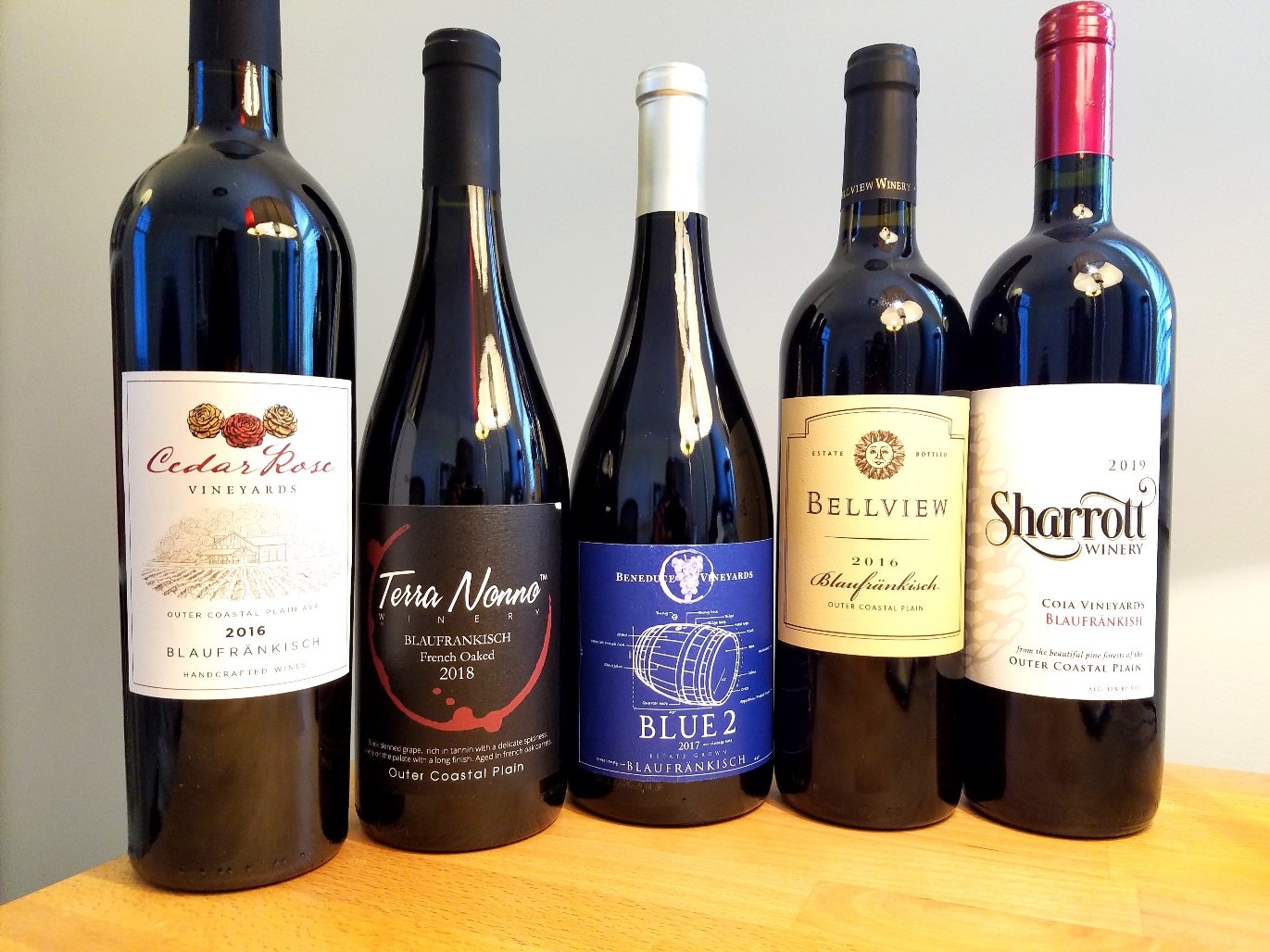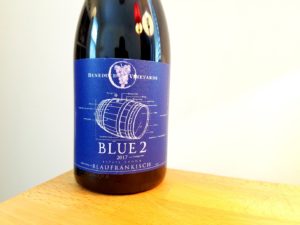Blaufränkisch and New Jersey’s Take on a Grape Made Popular by Austria
Blaufränkisch is an under-the-radar, red-grape varietal that goes by many names.
It goes by Lemberger in Germany and Kékfrankos in Hungary even as we often refer to it in the United States by its Austrian name, Blaufränkisch.
Etymologically blaufränkisch literally translates to “Blue of the Franks” referencing the grape’s blueish tint and middle-age association with wines produced by the Franks, a western-Germanic tribe.
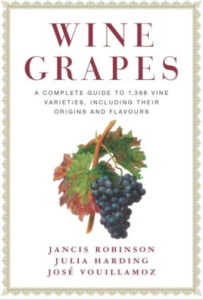
Photo Credit: Wine Casual, Dr. José Vouillamoz, who along with Jancis Robinson co-authored the book, Wine Grapes: A Complete Guide to 1,368 Vine Varieties, Including Their Origins and Flavors, describes how the grape varietal does not often get the recognition or production treatment it deserves.
Blaufränkisch 101
DNA analysis suggests blaufränkisch originated in Slovenia and is a cross of Gouais Blanc x Blaue Zimmettraube.
Surprisingly, while we often associate blaufränkisch with Austria because it is a leading exporter of the grape, Austria is only the second-largest producer of the grape worldwide.
Hungary leads worldwide plantings of blaufränkisch with 7,260 ha (42% plantings worldwide) under vine, followed by Austria with 2,808 ha (16% plantings worldwide) and Germany with 1,216 ha (10% plantings worldwide) according to data collected in 2016.
Because the grape buds early and ripens late it is only suitable for warmer climates but not climates so warm as to overpower the grape’s acidity.
Blaufränkisch tends to produce light-to-medium-bodied wines in a range of styles from young, unoaked and easy-to-drink to oaked and made-to-age.
Blaufränkisch is characterized by red-fruit flavors, bright acidity and deep color, and depending on how it is produced it can also have some spicy notes.

Photo Credit: Wine Casual, Dr. José Vouillamoz describes the history of blaufränkisch in a seminar hosted by the New Jersey Garden State Wine Growers Association.
Dr. José Vouillamoz, who along with Jancis Robinson co-authored the book, Wine Grapes: A Complete Guide to 1,368 Vine Varieties, Including Their Origins and Flavors, described how the varietal does not often get the recognition or production treatment it deserves in a May 2021 seminar focused on blaufränkisch hosted by the New Jersey Garden State Wine Growers Association:
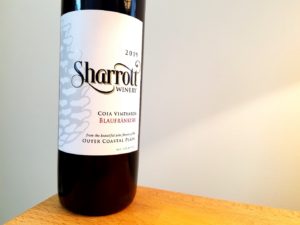
Photo Credit: Wine Casual, According to Larry Sharrott III, owner of Sharrott Winery, the winery vinifies its blaufränkisch the way it would a cabernet sauvignon or cabernet franc.
“The capacity of blaufränkisch to make long lasting wines with a good aging potential is not recognized by the general public. Still today it is considered as wine to be drunk young with the exception of some oak-aged versions. It does not have the reputation of pinot [noir] for example or say cabernet or merlot for the aging potential, and that makes it a lower mark on the market in my opinion. But the style of wine that are currently done especially in Austria but also in Hungary is slowly becoming fashionable in Europe because people want more and more they are asking for wines with lower alcohol content. We are getting over this fashion we used to have 10 or 15 years ago of 14-15% alcohol and people are into 12% or 13% which is the case with Austrian blaufränkisch.” – Dr. José Vouillamoz
New Jersey Blaufränkisch
While blaufränkisch plantings in the United States represent less than 1% of plantings worldwide, New Jersey is one of a handful of states that produces wines from the grape.
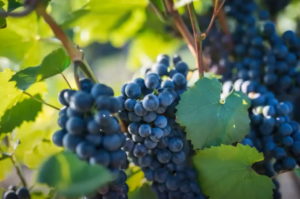
Photo Credit: Beneduce Vineyards, Blaufränkisch grapes from Beneduce Vineyards in Pittstown, New Jersey.
So how did blaufränkisch come to be planted in New Jersey?
Jim Quarella, the owner of Bellview Winery in Landisville, New Jersey credits Joe Fiola who is now a Specialist in Viticulture at University Maryland Extension, with Bellview’s decision to plant blaufränkisch back in 2014.
Tomasello Winery is widely considered to have been the first winery to plant blaufränkisch in New Jersey.
Mike Beneduce Jr., winemaker and vineyard manager at Beneduce Vineyards in Pittstown, New Jersey notes that Beneduce Vineyards looked at soil and climate data for their vineyard site, compared it to European wine regions and found Burgenland, Austria was most similar to their vineyard area.
Beneduce Vineyards began planting blaufränkisch in 2009 and now has over 5 acres of the varietal which represents the winery’s main red grape.
Blaufränkisch in Two Main Styles

Photo Credit: Wine Casual, According to Larry Sharrott III, owner of Sharrott Winery, the winery vinifies its blaufränkisch the way it would a cabernet sauvignon or cabernet franc.
Having spent time with winemakers in Austria, Mike Beneduce Jr. observed Austrian winemakers vinifying blaufränkisch in two main styles — either like a red Burgundy with shorter maceration times, less new oak and a focus elegance and aromatics or like a Bordeaux with longer maceration times, heavier extraction, riper fruit and more new oak.
Beneduce Vineyards produces blaufränkisch in the former style, while Sharrott Winery produces wine in the latter style.
Sharrott Winery produced its first vintage of blaufränkisch in 2019 with grapes grown by Larry Coia from Coia Vineyards.
According to Larry Sharrott III, owner of Sharrott Winery, the winery vinifies its blaufränkisch the way it would a cabernet sauvignon or cabernet franc.
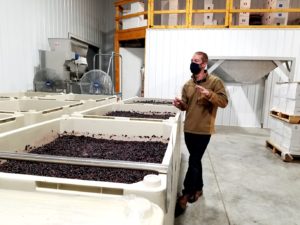
Photo Credit: Wine Casual, Mike Beneduce Jr., Winemaker and Vineyard Manager of Beneduce Vineyards, feels blaufränkisch’s versatility makes it an attractive red-grape option for New Jersey grape growers.
Sharrott aged their 2019 vintage for 10 months using a blend of 30% new oak, and a blend of one-, two- and three- year-old barrels.
The blaufränkisch style a New Jersey winery chooses is influenced in part by climate and geography within the state.
In New Jersey blaufränkisch produces lighter, brighter fruit in the northern, cooler part of the state and darker, richer fruit in the warmer, southern part of the state.
Mike Beneduce Jr. feels blaufränkisch’s versatility makes it an attractive red-grape option for grape growers and for producers who have the patience to give the resulting wine the time it needs to age in the bottle:
“The exciting thing for me is that one of the hard parts about growing grapes in New Jersey is for all of is that we have such a range of climates and soils from north to south, so identifying one variety that can be successful throughout the whole state has been very difficult. But I really think blaufränkisch, because of these sort of two styles that you can make it in, has a huge potential for success from north to south; you know, stylistically different but I think the consumer is going to appreciate that variety, and you know the price point. We can charge as much for this as we can for any of our estate-grown reds and it flies out the door. People are waiting for it, and we’ve consciously had to lay stuff down because I do think it’s a wine that needs two years in the bottle to really reach that sort of harmony. So, we’re about 18 months in oak and then at least two years in the bottle before we release.” – Mike Beneduce Jr.
5 Wines to Begin Your New Jersey Blaufränkisch Education
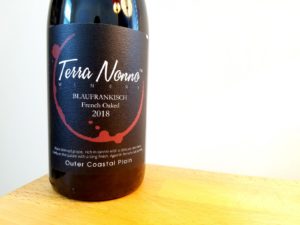
Photo Credit: Wine Casual, Terra Nonno Winery, French Oaked Blaufränkisch 2018, Outer Coastal Plain, New Jersey
Below are five examples of New Jersey blaufränkisch which will not only provide you with a good introduction to the grape varietal, but also to its two distinct styles as detailed above.
Use this experience to compare to New Jersey blaufränkisch to that produced in other wine regions around the country such as in the New York Finger Lakes where blaufränkisch (or Lemberger as it’s more commonly referred to there) tends to be leaner so you can determine the style you prefer the most.
- Bellview Winery, Blaufränkisch 2016, Outer Coastal Plain, New Jersey (Wine Casual, 89 Points)
- Beneduce Vineyards, Blue 2 Blaufränkisch 2017, New Jersey (Wine Casual, 90 Points)
- Sharrott Winery, Coia Vineyards Blaufränkisch 2019, Outer Coastal Plain, New Jersey (Wine Casual, 90 Points)
- Cedar Rose Vineyards, Blaufränkisch 2016, Outer Coastal Plain, New Jersey (Wine Casual, 91 Points)
- Terra Nonno Winery, French Oaked Blaufränkisch 2018, Outer Coastal Plain, New Jersey (Wine Casual, 92 Points)
